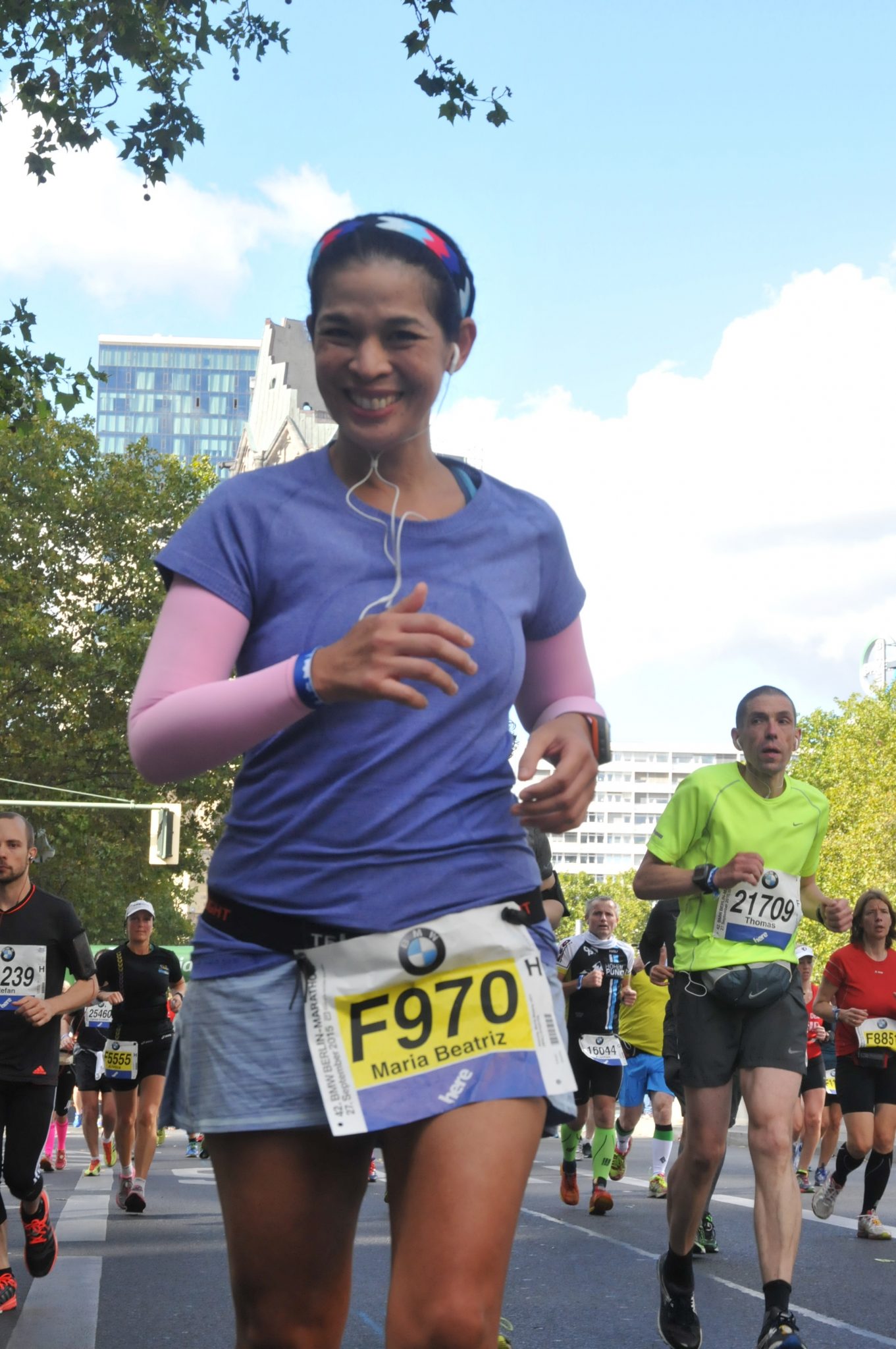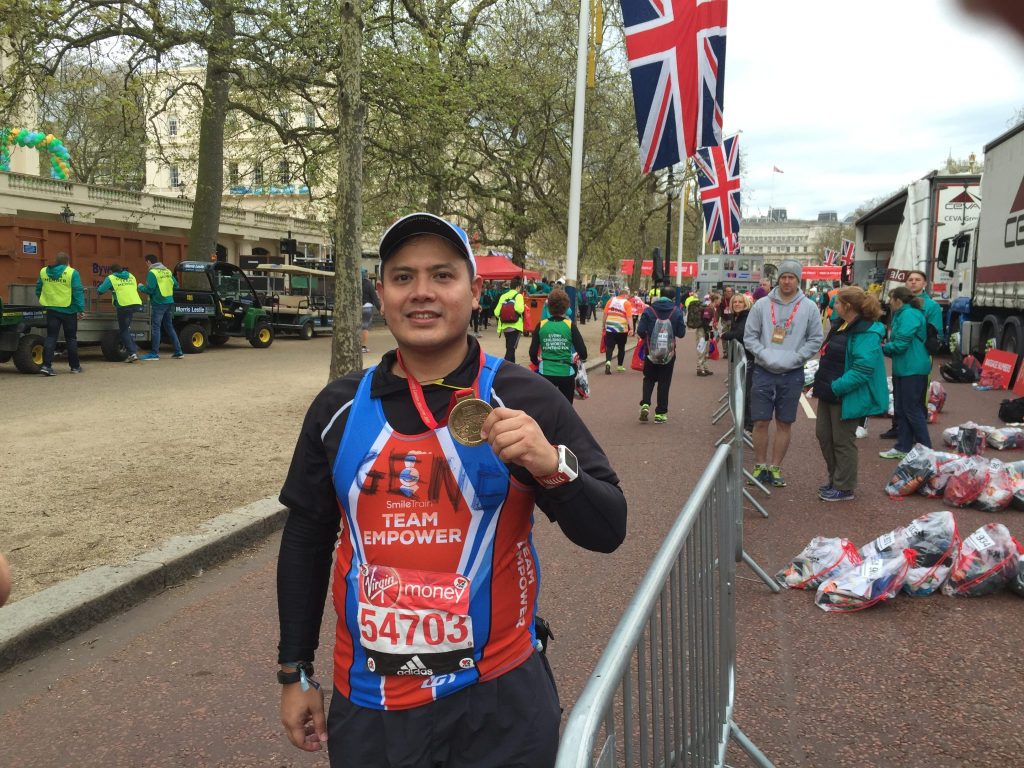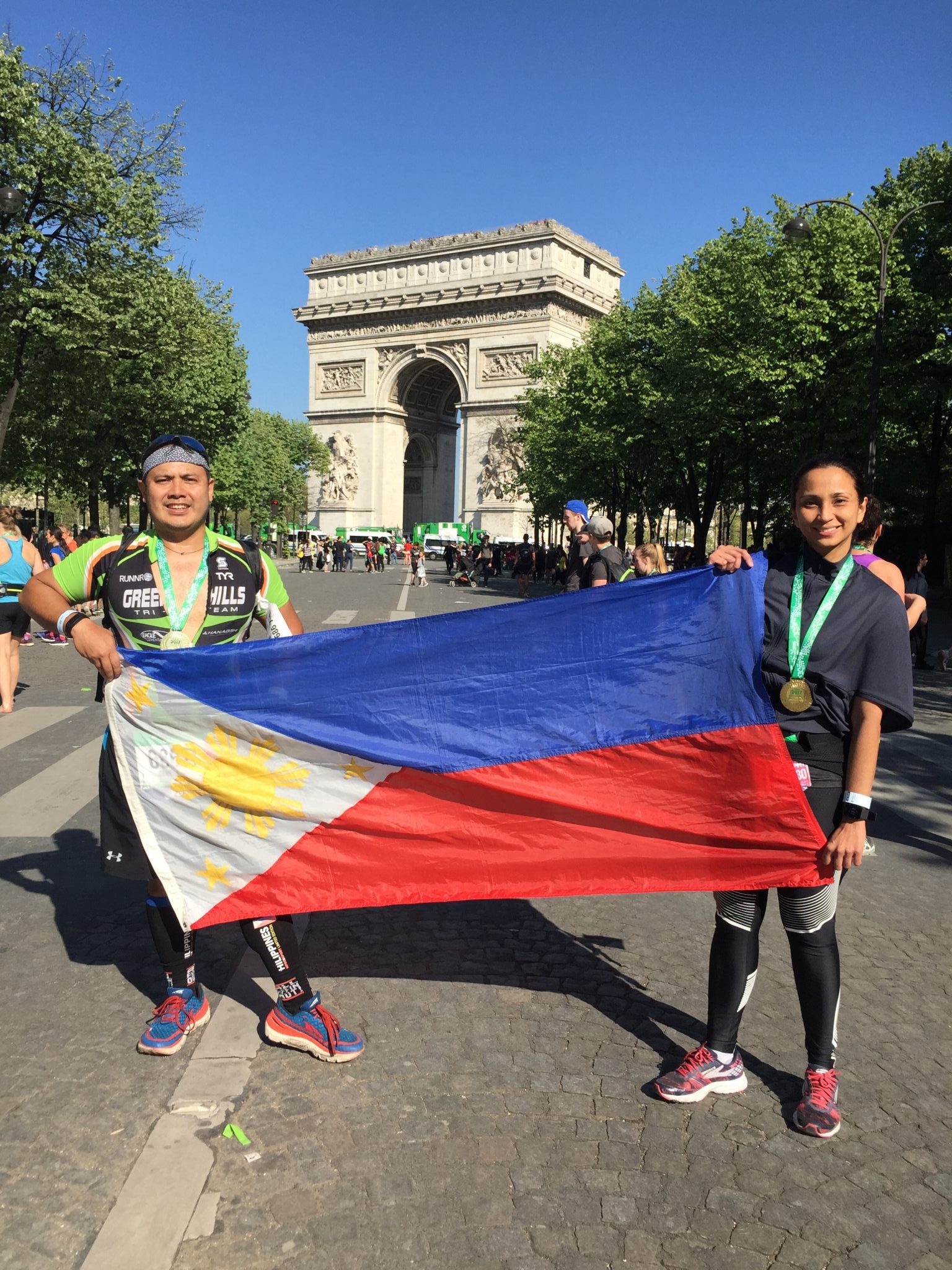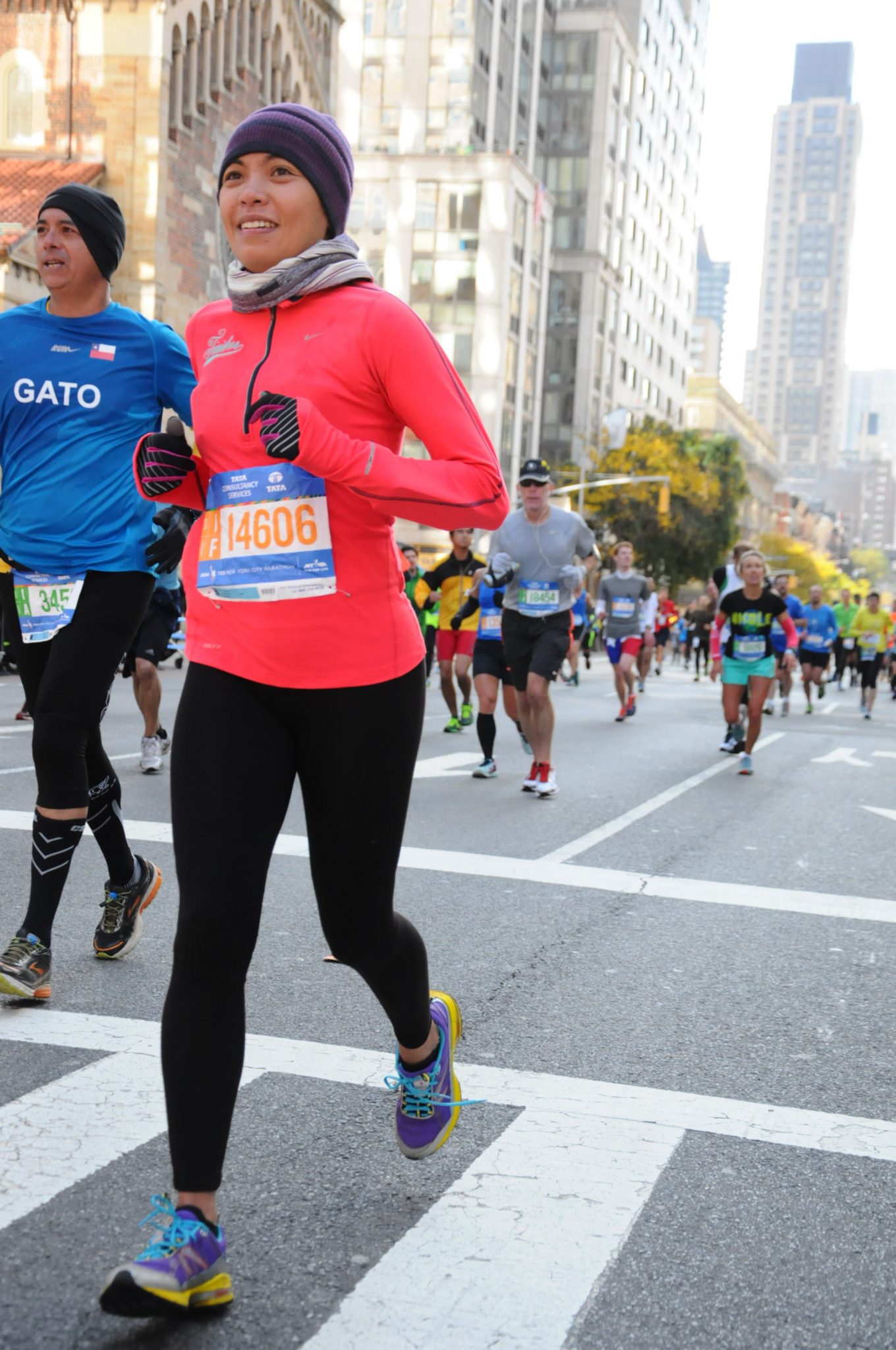Three international marathoners have some important advice for first-time international marathon runners
Photos courtesy of subjects
Running a marathon seems like on everybody’s to-do list, especially when extreme athleticism is touted as the “new midlife crisis” in which more and more people in their 40s are running 42 kilometers on various continents. In the same article, author Paul Flannery says that “the largest field of competitors at the 2017 New York Marathon was between the ages of 40 and 44” and yet, on closer inspection, it isn’t about chasing youth as it is about changing the notion of what it means to accomplish that kind of adventure at that age.
Regardless of your age and definition of adventure, if you’re thinking of an exploit as fulfilling as a marathon, preparing for it months ahead leading up to the day you step onto the starting line requires a great amount of effort and commitment. But, dedication is only half the battle; ensuring you reach your chosen marathon in perfect race condition is another. So we spoke with three running veterans to dish out exactly what you need to know before running your first overseas marathon.
Bea Azcuna
Bea Azcuna is a 47-year-old government employee who works at the Supreme Court’s Philippine Judicial Academy. Her job involves training judges, court personnel, and even aspiring judges. Azcuna has also spent seven years running marathons—eight to date, including six international marathons: Hong Kong, Tokyo, Chicago, Berlin, New York, and Marine Corps in Washington DC.

What do you pack for an international marathon?
I make sure to pack what I will wear on race day in my hand carry so that if my luggage gets lost or delayed, I will have my gear with me. All my international marathons have been in somewhat cold temperatures so I make sure to bring a race belt, arm sleeves, a cap or beanie, gloves, and a trash bag that turns into a top to keep me warm while waiting for gun start.
My marathon survival kit would be:
- Band-aid for areas that are blister-prone
- Vaseline. I apply this below my sports bra area where sweat tends to gather and in between my toes where friction with socks is prominent
- Extra socks. Make sure socks used on race day are not new. Never wear new socks on race day.
- Advil
- Supply of five gels
- Nuun for daily hydration prior to race day
- DIY salt packs
Have you ever experienced getting sick abroad preparing for a marathon? If so, how did you deal with it?
Yes, I felt sick during my 2015 Berlin Marathon and 2017 Marine Corps Marathon. In 2015, I made a mistake and took a citrus-flavored gel on a semi-empty stomach. It made me feel acidic. I wanted to throw up but ended up just taking it slower than I planned. I did not panic. I just accepted I would not PR that day and listened to my body and walked when needed. In 2017, I was exhausted from jet lag and a series of work meetings held in the US caused lack of sleep and exhaustion on race day.
“My advice is to arrive at least a week before the race so your body clock can adjust by race day. It’s important to rest well the day before the marathon. I also make it a habit to wear compression calf sleeves on the plane. A 17-hour flight in economy is never easy and puts a lot of strain on your muscles and circulation,” says Bea Azcuna
Do you have a checklist for dealing with the risks of illness?
Take a break. Appreciate your surroundings. My advice is that you must begin hydrating and avoid sightseeing. Stay off your feet. Another thing I do is pump up my vitamins before and during travel. Airplanes are prone to a lot of germs. Your immune system is already taking a lot of strain with your training and travel.
Let’s talk about time zones. How do you adjust to it and how much time do you allot to recover from jet lag?
My advice is to arrive at least a week before the race so your body clock can adjust by race day. Another thing is it’s important to rest well the day before the marathon. I also make it a habit to wear compression calf sleeves on the plane. A 17-hour flight in economy is never easy and puts a lot of strain on your muscles and circulation.

When it comes to food, does the rule ‘nothing new on race day’ still applies?
Yes! Save that for your post-race celebration.
Lastly, do you have any tips during race day?
Wake up early so you can have enough time to eat, pray, go to the bathroom, and prepare yourself leisurely. Have a good breakfast. Not too heavy and not too light. I work best with a boiled egg, a banana, and whole wheat toast with peanut butter. Leave for the race venue early enough that when you get there, it will still be an hour before gun start. If running with friends, designate a place where you will meet post-race as you most probably will end up losing each other during the run. And have fun! The hard part was all the months of training. This is the cherry on the cake.
Gene Tiongco
Gene Tiongco is a 43-year-old plastic surgeon who has established a love for endurance sports like triathlon, open-water swimming, and marathons. His foray into marathons began in 2010. He has since completed 13 marathons, nine of which were done abroad including New York, Kyoto, Berlin, Chicago, Tokyo, Osaka, London, and Paris. “The reason I enjoy running abroad is the chance to tour other cities through running and enjoy the sights with every step,” he says. This October, he will be racing his 10th international marathon in Amsterdam.

What do you pack for an international marathon?
What I always bring is an extra layer of thick clothing, be it in the form of an old sweater, bathrobe, surgical gown or a blanket. These extras are essential because it’s always cold during the assembly time and while waiting for gun start. Besides, you can always leave these behind and they’re given to charity.
To avoid chafing, always bring petroleum jelly or anti-chafing cream. Cold weather makes your skin drier and more prone to chafing. I always bring a jacket or sweater and place it in my bag deposit because it gets cold during the later part of the day.
Lastly, I have a Philippine flag that I bring and leave in my bag deposit. After every race, I go around the marathon venue waving the Philippine flag. Kababayans and spectators can relate to this as they also beam with pride seeing a Filipino runner easily identifiable with a Filipino flag.
Have you ever experienced getting sick abroad preparing for a marathon? If so, how did you deal with it? Do you have a checklist for dealing with the risks of illness?
Fortunately, I haven’t been sick. It helps that I’m a doctor so I bring lots of vitamins and take lots of rest. If possible, I try to take the least amount of flights to my marathon destination so it’s less stressful and less contact with people who might contaminate me.

How early do you need to be in the city you’re racing in to acclimatize to the conditions or prepare for the race? Is there an ideal time frame?
I try to be in the city as early as four to five days before race day. I allot time to do at least two short runs to acclimatize to the weather conditions.
What about accommodation? Are location and access important to ensure you are at your best?
Choose a hotel that is conveniently located near the finish line of the race. It’s tough finishing a marathon and it will be such a hassle going home to a far and inaccessible hotel. Give your body a favor and don’t punish it by walking more to a faraway hotel.
“Running an international marathon makes you feel the warmth of the city. You feel welcomed and the crowd pushes you,” says Gene Tiongco
When it comes to food, does the rule ‘nothing new on race day’ still applies?
I usually enjoy what food a particular city has to offer. However, a day or two before the race, I go back to eating simple food like pasta, bread, pizza, burgers, and fried chicken. A bottle of beer to calm the nerves a day before the race also applies to me. It is also important to drink at least three liters of water to keep the body hydrated.
Lastly, do you have any tips during race day?
Enjoy the race but run at your own pace. Bask in the moment and enjoy the vibe. Talk to fellow runners. Running an international marathon makes you feel the warmth of the city. You feel welcomed and the crowd pushes you. It’s a very different feeling running with people in every part of the road and corner cheering you on. Wear something that says Philippines on your shirt. You will definitely run into a kababayan who will be cheering you all out; it gives them a sense of pride to see a fellow Filipino running the marathon.
Mench Dizon
Mench Dizon is the CEO and founder of business travel technology platform TripClub with over 15 years’ experience in strategy, brand, marketing, and digital. In addition to being a strong proponent of Women in Tech and, more recently, Women in Blockchain Philippines, Dizon is also a Six Star World Marathon Majors finisher who plans to run on all seven continents in the next two years. All those on top of taking care of her two kids and writing regularly for her blog.

What do you pack for an international marathon?
I tend to pack light and not overthink what I need to bring. I bring the planned race day outfit with one to two extras, which I usually use during shakeout runs prior to the race. I bring a tattered sweater too when running in cold weather and use it as throwaway clothing during race day. I wear my running shoes during the flight especially if I check in luggage. It’s easy to find replacement running clothes at the expo in case luggage gets lost or delayed but trickier to get a new shoe.
Have you ever experienced getting sick abroad preparing for a marathon? If so, how did you deal with it?
I had a bad case of jet lag in Boston because I just had two days to acclimatize. I normally arrive at least a week before the race. To address this, I made sure to catch some sun to adjust my body clock. I also hydrated a lot to feel less tired and drowsy.
How early do you need to be in the city you’re racing in to acclimatize to the conditions or prepare for the race? Is there an ideal time frame?
At least a week is best for me especially in cold weather. But if same weather, a day or two should be okay.
“Don’t overplan and overthink. Plan enough and train well so you can just enjoy the race. There is nothing like having the streets of a beautiful city closed off so that you can just run,” says Mench Dizon
When it comes to food, does the rule ‘nothing new on race day’ still applies?
I am not a picky eater and tend to take the nutrition that’s available. I just bring a disposable bottle filled with a mix of water, Gatorade, and salt caps that can last me for the first hour. After that I tend to rely on hydration available, alternating water and sports drink. For a fast race, I trained to drink on the go but if not after a specific time, I tend to walk to the water stations as a way to reset my running form. I just bring one gel for every hour of running. So around four should be okay for me. I also like taking food that’s given by spectators. I also bring salt tabs but thankfully I have not used them since I haven’t really cramped on the run.
I treat myself to steak three days before the race (more as a ritual) and just eat regularly, not really into carb loading before the race. And then I start hydrating with water more deliberately two days before the race
Two hours prior to the race, I eat a full meal then head off to the marathon village where I also eat free breakfast given away like bars and bread. During the race, I take gels and only partake of the spectators’ food towards the last five to seven kilometers.
Lastly, do you have any tips on race day itself?
Plan for the day: how to get to start, what to wear, how to get home, what to eat. But don’t overplan and overthink. Plan enough and train well so you can just enjoy the race. There is nothing like having the streets of a beautiful city closed off so that you can just run.